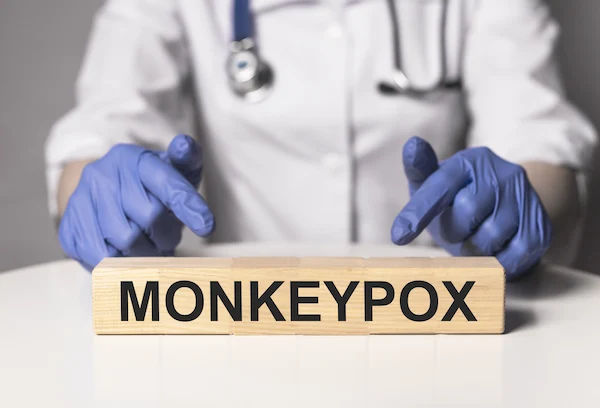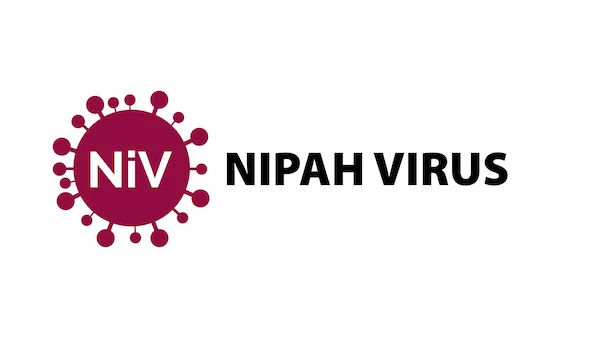How To Reduce Prostaglandins?
Find out how one can reduce prostaglandins naturally and medically. Know the effective dietary and lifestyle changes, supplements, and medications to control low inflammation and improve overall health.

Written by
Last updated on 3rd Jul, 2025
Prostaglandins are hormone-like substances that play an important role in many bodily functions, such as inflammation, pain regulation, and blood flow. Although prostaglandin is essential for health, too much of it can result in chronic pain, menstrual discomfort, and inflammatory disorders. Knowing their role in the body is necessary to manage their effects correctly. This guide will discuss prostaglandins, why they are important, and when it's necessary to reduce their levels for better health.
Causes of Elevated Prostaglandin Levels
Several factors lead to high prostaglandin levels, resulting in inflammation, pain, and other medical problems. They are:
1. Inflammation and Prostaglandins
Inflammation may lead to the production of prostaglandins, which help promote healing. However, severe inflammation can trigger it to excessive levels, causing pain and discomfort.
2. Dietary Triggers
Diets rich in omega-6 fatty acids, processed foods, sugar, and alcohol enhance prostaglandin production and inflammation.
3. Hormonal Imbalances
Problems, for instance, PCOS and endometriosis, can cause hormonal imbalances, which cause too much prostaglandin release and severe cramps.
4. Chronic Stress
Stress that goes on for a long time causes inflammation and increases prostaglandin levels, which increases pain and other symptoms.
Lifestyle Modifications to Reduce Prostaglandins
Healthy lifestyle changes can decrease inflammatory prostaglandins, control prostaglandin levels, and enhance overall health. The following ways can be beneficial:
1. Changes in Diet for Balanced Prostaglandin Levels
Anti-inflammatory foods in a diet can help reduce the excess prostaglandin production. To reset things and regain body balance, consume omega-3 fatty acids (predominantly found in fatty fish, flaxseeds, and walnuts) and avoid processed foods, refined sugars, and excessive red meat.
2. Physical Activities for Controlling Inflammation
Physical activity makes the regular patterns that maintain these levels. Specifically, beginners who practice low-impact exercises like yoga, swimming, or walking can be especially beneficial to anyone suffering from pain, aiding in blood circulation.
3. Stress Management Techniques to Lower Prostaglandins
Prostaglandin levels are elevated with chronic stress. Stress can be managed, and hormonal balance can be supported with mindfulness practices, deep breathing exercises, and relaxation techniques, including meditation, journaling, etc.
4. Hydration and Detoxification
Proper hydration helps detoxify the body and reduces the inflammatory response. The health effects of herbal teas and antioxidant-rich fluids can also help in balancing the prostaglandin levels.
5. Sleep Routine for Maintaining Hormones
Hormone regulation and control of inflammation go hand in hand with quality sleep. Sleeping regularly and turning off the screens at least an hour before bed can also keep prostaglandin levels normal.
Natural Supplements and Herbs
Natural supplements and herbs help in balancing hormones and reduce inflammation to regulate prostaglandin levels. The following are the options which have shown benefits:
1. Omega-3 Fatty Acids for Prostaglandin Regulation
Fish oil and flaxseed sources of omega-3 fatty acids help overcome the anti-inflammatory prostaglandins. If green tea is consumed regularly, it can reduce inflammation and support overall health.
2. Turmeric and Curcumin as Natural Anti-Inflammatories
Curcumin, a powerful substance, is contained in the spice turmeric. It contains anti-inflammatory properties that inhibit extra prostaglandin production. Turmeric in the food or as a supplement can be consumed to manage inflammation.
Other Anti-Inflammatory Supplements
Other anti-inflammatory supplements includes:
Ginger: Contains bioactive compounds that reduce inflammation and support pain relief.
Magnesium: Helps regulate muscle contractions and may help reduce menstrual pain associated with prostaglandins.
Boswellia: Boswellia is known for its anti-inflammatory properties and may help to control chronic inflammation.
Medications That Lower Prostaglandin Production
Certain medications will need to be used to stabilise prostaglandin levels and relieve inflammation manifestations. The commonly used ways to achieve this are:
1. Nonsteroidal Anti-Inflammatory Drugs
Ibuprofen, aspirin, and naproxen interfere with prostaglandin synthesis through cyclooxygenase inhibition. They are widely used for pain relief and as therapeutics in treating inflammation.
2. Cyclooxygenase-2 (COX-2) Inhibitors for Targeted Relief
Being selective COX-2 inhibitors, celecoxib and other drugs reduce the function of COX-2 enzyme, reducing the inflammation with minimal gastrointestinal side effects often induced by traditional NSAIDs.
3. Hormonal Medications for Prostaglandin Regulation
Some of the hormonal treatments like birth control pills help regulate the amount of prostaglandin being produced from the body to manage conditions such as menstrual cramps and endometriosis.
4. Corticosteroids for Severe Inflammation
Prednisone, among other corticosteroids, is used to suppress inflammation and prostaglandin activity, which are usually used in chronic inflammatory diseases such as arthritis or asthma.
Potential Risks and Side Effects of Reducing Prostaglandins
Reduction of prostaglandins can avoid inflammation and pain, but excessive reduction may bring about unintended health effects. The following are a few points to be considered:
1. Balancing Benefits and Potential Harm
Prostaglandins are essential because they regulate the blood flow, protect the stomach lining, and support kidney function. Medication can be too suppressive and can cause problems such as digestive problems, increased risk of blood clotting, and even kidney dysfunction.
2. Consultations with Healthcare Professionals
Any supplements, medications, or diet adjustments should come after medical advice. A healthcare professional can provide personalised guidance on maintaining the prostaglandin levels without adverse effects.
3. Potential Gastrointestinal Effects
Although NSAIDs and COX 2 inhibitors reduce PG production, which can have benefits, they can also cause stomach ulcers, acid reflux, and digestive distress, as prostaglandins are essential in protecting the stomach.
4. Effect on Cardiovascular Health
Heart-related complications associated with an increased risk have been reported on certain medications that reduce prostaglandins, particularly COX-2 inhibitors.
5. Hormonal and Reproductive Considerations
As prostaglandins are involved in reproductive health, excessive suppression may affect menstrual cycles and fertility as well as pregnancy outcomes, so it should be carefully managed.
Dietary Plans and Recipes
Managing prostaglandin levels is dependent on diet, and a well-balanced diet can significantly reduce inflammation in the stomach lining. Here are the key dietary principles and a sample meal plan for optimal health:
1. Anti-Inflammatory Diet Essentials
Including some anti-inflammatory foods will help regulate prostaglandin production and also help in overall well-being. The following are the essential components of an anti-inflammatory diet:
Omega-3-rich sources such as salmon, flaxseeds, and walnuts.
Whole grains, legumes, and vegetables, which are fibre-rich, can be eaten to support gut health.
Antioxidant-rich ingredients like turmeric and berries, as well as leafy greens, for the reduction of oxidative stress.
Herbs and spices like ginger, garlic, and turmeric naturally lower inflammation.
Green tea, herbal tea, and appropriate water for detoxification.
Sample Meal Plan for Maintaining Prostaglandin Levels
A structured meal plan enables people to fulfil their nutritional needs while maintaining their regular diet.
1. Breakfast:
Overnight-soaked oats with flax seeds, walnuts, and blueberries
Warm water with either green tea or turmeric infusion
2. Mid-Morning Snack:
A handful of almonds and pumpkin seeds
Fresh fruit (e.g., apple or kiwi)
3. Lunch:
Grilled salmon or tofu with quinoa and steamed greens
Combining extra olive oil with lemon dressing serves both as a delicious dressing option and an additional anti-inflammatory benefit.
4. Afternoon Snack:
Herbal tea with ginger and honey
Carrot and hummus dip
5. Dinner:
Stir-fried vegetables with brown rice and turmeric-seasoned lentils
Chamomile or peppermint tea for digestion
Case Studies and Research Updates
Recent studies and documented cases offer helpful information about controlling prostaglandin levels and their health implications.
1. Recent Findings on Prostaglandin Management
Retained placenta was assessed in a systematic review using prostaglandin analogues. The study showed that these analogues effectively promote the expulsion of the placenta without surgical intervention.
In another study, researchers determined that prostaglandin DP receptors play a role in embryo implantation. This finding points to the ability to advance fertility treatments by getting to the specific prostaglandin pathways that promote implantation success.
2. Evidence-Based Success Stories
A detailed case study stating the experience of a 35-year-old woman named Sarah, who had fatigue and unexplained weight gain. Her symptoms were attributed to imbalances in prostaglandin levels because of a medical evaluation. Sarah got enormous benefits from targeted intervention aiming to regulate these levels, significantly improving her health and well-being.
There is a detailed instance when a 52-year-old woman, named Mrs. Anderson was suffering from symptoms of menopause, such as hot flashes and joint pain. However, once she incorporated prostaglandin-targeted therapies into her treatment plan, she got relief from notable symptoms, resulting in increased quality of life.
Conclusion
A balanced approach would reduce the levels of prostaglandin through medical intervention, natural supplements, and dietary and lifestyle changes. Regular exercise, an anti-inflammatory diet, and stress management are advisable to manage the inflammation, while supplements such as Omega-3 fatty acids and turmeric add to the support. Clinical solutions can be provided by medications such as NSAIDs and COX-2 inhibitors where they are needed. Prostaglandins, however, play an essential role in the body. Therefore, a personalised approach is required. Healthcare professional consultation helps in safe and appropriate management and reduces the risk of health problems to achieve maximum health and wellness.
Consult Top Obstetrician and Gynaecologist
Consult Top Obstetrician and Gynaecologist

Dr. Ramya G S
Obstetrician and Gynaecologist
11 Years • MBBS, DGO - Obstetrics & Gynaecology, DNB - Obstetrics & Gynaecology
Bengaluru
Apollo Clinic, JP nagar, Bengaluru

Dr. Harshitha B R
Obstetrician and Gynaecologist
11 Years • MBBS, DGO( OBS & GYN)
Bengaluru
Apollo Clinic, JP nagar, Bengaluru

Dr. Mona Yadav
Obstetrician and Gynaecologist
19 Years • MBBS, MD (Obstetrics & Gynaecology)
Dombivli
Nulife multispeciality, Dombivli

Dr. Divyashree S
Obstetrician and Gynaecologist
7 Years • MBBS, MS (OBG)
Bengaluru
Apollo Clinic, JP nagar, Bengaluru

Dr. Parul Sharma
Obstetrician and Gynaecologist
8 Years • MBBS, MS (Obstetrics & Gynaecology)
New Delhi
THE DOCTORS NESST, New Delhi




